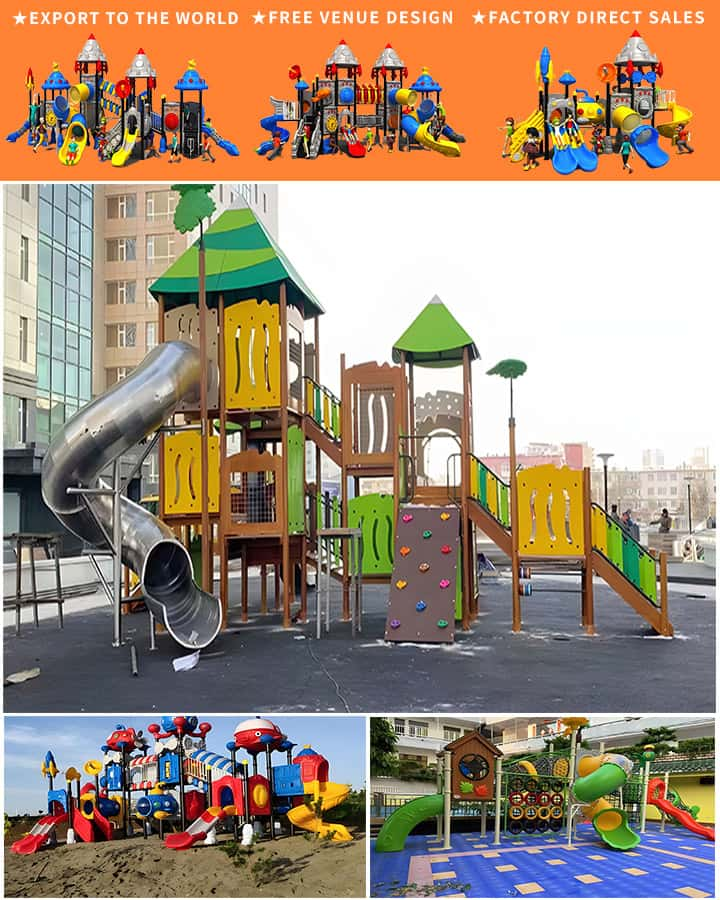School playgrounds are an indispensable part of the educational environment, offering students a space for physical activity, social interaction, and creative play. Integrating high-quality playground equipment can significantly enhance the overall educational experience by promoting physical health, encouraging teamwork, and stimulating imaginative play. This article explores the benefits, types, and considerations for selecting playground equipment for schools.
Benefits of High-Quality Playground Equipment
Physical Health: In an era where childhood obesity is a growing concern, playgrounds equipped with diverse physical activities like climbing structures, slides, and swings encourage regular exercise. Such equipment helps in developing motor skills, coordination, and strength among children, contributing to their overall wellbeing.
Social Skills: Playgrounds are social hubs where children learn to interact, share, and collaborate with peers. Group play fosters essential social skills such as communication, empathy, and problem-solving. Equipment like seesaws, merry-go-rounds, and interactive games can accommodate multiple children, enhancing cooperative play.
Cognitive Development: Creative play is crucial for cognitive development. Playground equipment that allows for imaginative activities—like themed play structures, sandboxes, and water tables—can stimulate creativity and critical thinking. These elements encourage children to explore their environment and develop innovative ideas.
Emotional Well-being: Playtime is essential for reducing stress and building resilience. A well-equipped playground provides a safe space where children can express themselves freely and release pent-up energy, leading to improved emotional health and reduced behavioral issues.

Types of Playground Equipment
Traditional Play Equipment: Swings, slides, seesaws, and merry-go-rounds remain popular due to their timeless appeal and versatility. Modern versions of these classics often include safety enhancements and are designed to be inclusive for all abilities.
Climbing Structures: Climbing walls, ropes, and jungle gyms offer excellent opportunities for physical exercise and building confidence. They help children overcome fears and develop spatial awareness and problem-solving skills.
Interactive and Themed Play: Playgrounds featuring themes such as castles, pirate ships, or nature trails provide immersive experiences that spark imagination. Interactive panels, musical instruments, and sensory play areas engage different senses and promote learning through play.
Inclusive Playground Equipment: It’s crucial to ensure that playgrounds are accessible to all children, including those with disabilities. Inclusive equipment such as wheelchair-accessible swings, transfer stations, and adaptive climbers allow every child to enjoy and benefit from playtime.
Considerations for Selecting Playground Equipment
Safety Standards: Safety is paramount when choosing playground equipment. Ensure that all items meet national and international safety standards (such as ASTM and EN). Regular maintenance and inspections are necessary to keep the equipment safe.
Age Appropriateness: Different age groups have varying needs and capabilities. Choose equipment that suits the age range of the users to ensure it is both challenging and safe. Multi-age equipment can also be beneficial for schools with a wide age range.
Durability and Maintenance: Investing in durable materials will reduce the need for frequent replacements and repairs. Consider weather-resistant materials and designs that can withstand heavy use. Proper installation and routine checks are essential for longevity.
Budget and Funding: While quality equipment is an investment, there are options available to fit various budgets. Seek grants, community donations, and partnerships with local businesses to fund playground projects. Long-term benefits in terms of student health and development justify the initial expenditure.
Community Involvement: Involving teachers, parents, and even students in the planning process can lead to a more effective and appreciated playground. Conduct surveys or hold meetings to gather input on preferred types of equipment and design preferences.
In conclusion, equipping school playgrounds with high-quality, diverse, and inclusive equipment is crucial for fostering a healthy, socially adept, and creatively enriched environment. By carefully considering safety standards, age appropriateness, durability, budget, and community involvement, schools can create playgrounds that serve as valuable extensions of the classroom, promoting holistic development in young learners.




